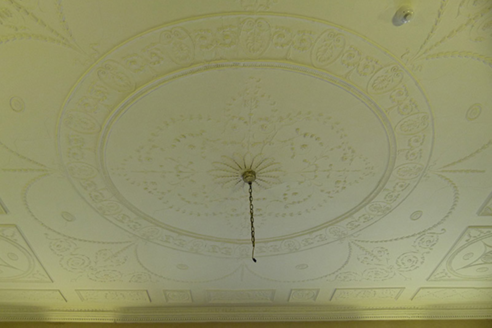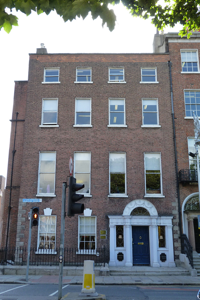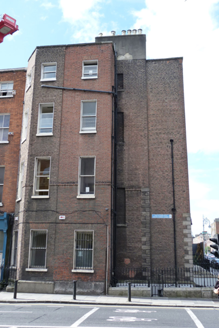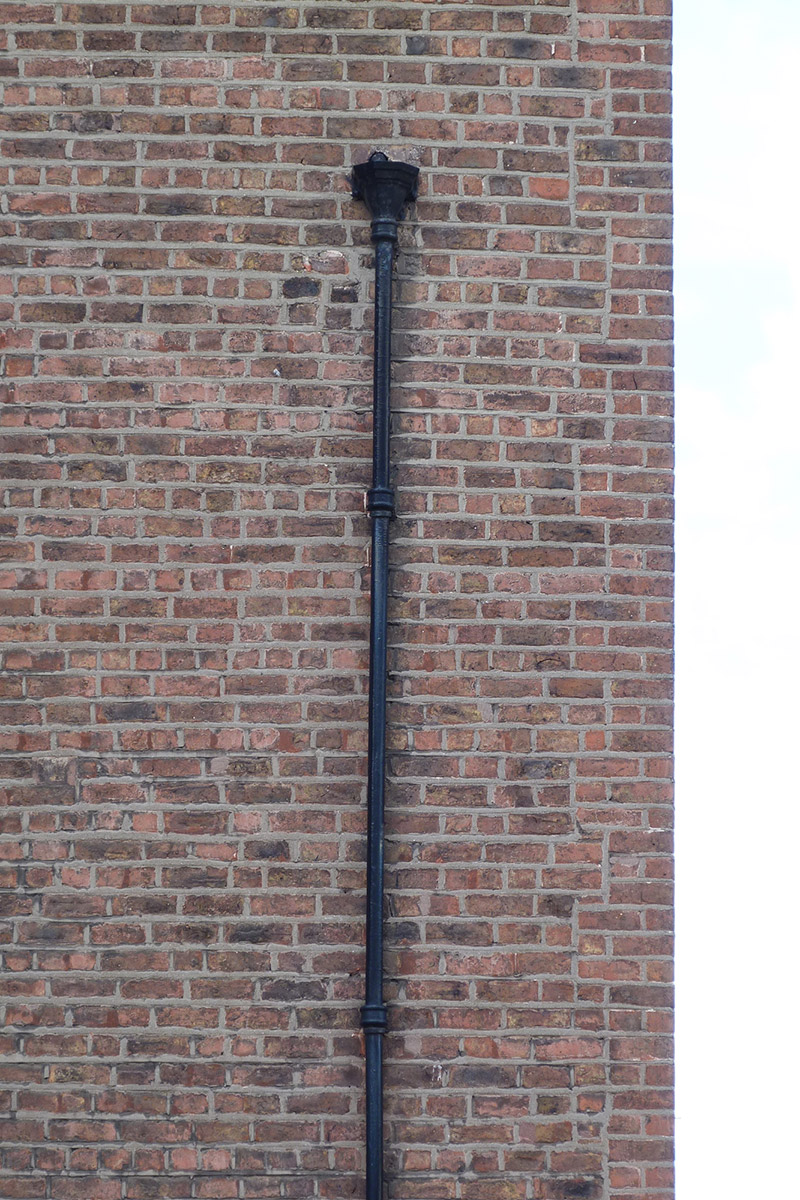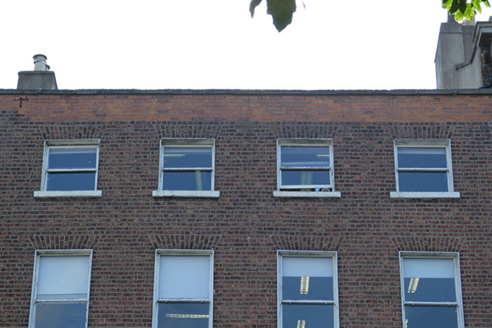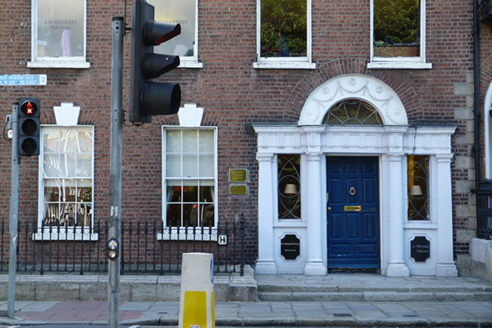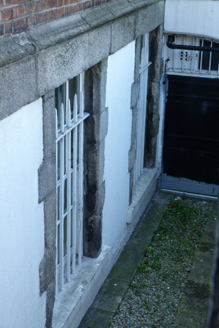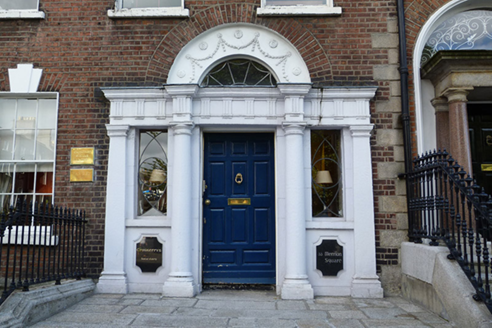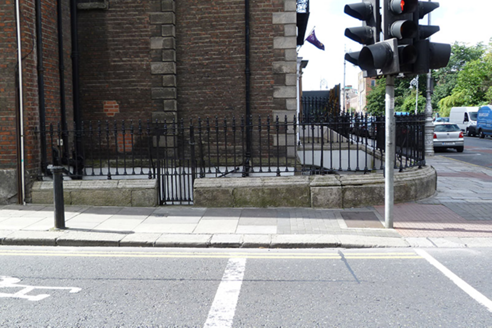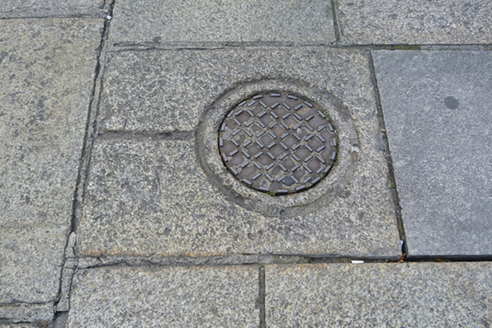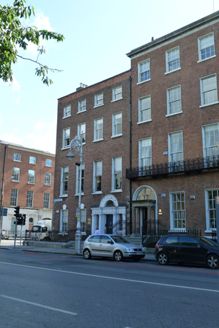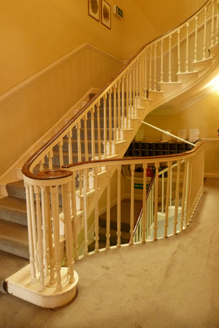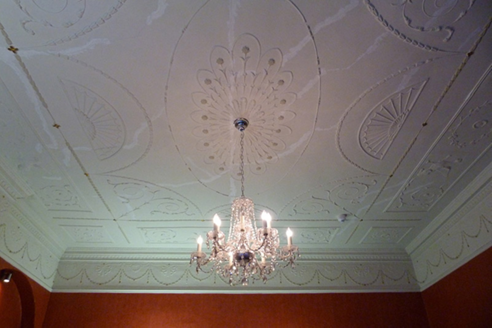Survey Data
Reg No
50100501
Rating
Regional
Categories of Special Interest
Architectural, Artistic
Original Use
House
In Use As
Office
Date
1780 - 1790
Coordinates
316863, 233537
Date Recorded
09/08/2016
Date Updated
--/--/--
Description
Corner-sited four-bay four-storey former house over basement, built c. 1786, having multiple-bay elevation to north with two-bay projection, canted to east end. Now in use as offices. Hipped slate roof to front, behind refaced brick parapet with granite coping, and partly hipped to north half of rear and over projection and round-profile perspex roof to rest. Rendered chimneystacks, that to north end having slightly projecting stack with blind window openings. Cast-iron rainwater goods to north. Flemish bond brown brick walls, with granite quoins to ground floor, moulded granite plinth course and painted rendered walls to basement. Rendered plinth to north elevation. Square-headed window openings, diminishing in height to upper floors, with rendered reveals and painted granite sills, and having carved granite block-and-start surrounds to basement openings. Timber sliding sash windows, front elevation having six-over-six pane windows to ground floor and basement and replacement one-over-one pane above and to north elevation. Ground floor window openings to front elevation have render triple keystones. Wrought-iron bars to basement windows and to openings to ground floor of north elevation. Elaborate tripartite doorcase with round-headed door opening having render linings, frieze with triglyphs and moulded cornice, engaged Tuscan columns with respond pilasters flanking decorative leaded sidelights over aprons having moulded panels, batwing fanlight with archivolt having swags and rosettes to front face, and eleven-panel timber door with brass door furniture. Granite platform with two granite steps. Cast-iron railings on carved granite plinth enclosing basement area. Cast-iron coal-hole cover set in granite flags to pavement. Entrance hall has tiled floor, Anthemion cornice and neo-Classical plaster ceiling; stairs hall has round-headed door opening with panelled timber surround and fanlight, oval timber open-string staircase with turned timber balusters and mahogany handrail; ground floor front room has chimneybreast to north wall and neo-Classical ceiling with central roundels and shallow swagged cornice; first floor front room has chimneybreast to north wall and neo-Classical ceiling with central roundel and cornice.
Appraisal
No. 35 Merrion Square forms part of the original development of the eighteenth-century square and the Fitzwilliam Estate. It was built by Samuel Sproule, architect, on a prominent corner site. Its stepped plan, evident in the north elevation, adds interest to the building. The impressive Doric doorcase with decorative fanlight and sidelights is the visual highlight of the exterior. Interior has an unusual oval open-string staircase. The front rooms retain shallow neo-Classical plasterwork ceilings, the work of skilled artisans. The retention of intact setting details, and of timber sash windows, enhances the building. The whole contributes significantly to the intact appearance of the square, which is one of the best-preserved Georgian ensembles in Ireland. The north, east and south sides of the square are lined with terraced houses of eighteenth and nineteenth-century date while the west side is terminated by the garden front of Leinster House. The houses of the east side are the most uniform, maintaining similar building heights and fenestration patterns. Individuality was introduced through the use of elaborate doorcases, window ironwork and interior decorative schemes. The east side of the square was originally set out in five large plots and the houses here were generally narrower than those on the north side and erected in a piecemeal fashion.
